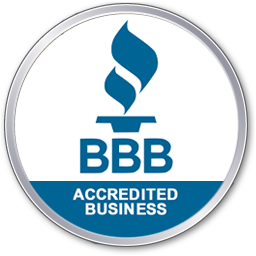Executive Summary
- Trenchless sewer repair is a cost-effective and time-efficient way to address damage in a sewer line without significantly disrupting your property.
- Traditional excavation methods are a good choice for situations where a sewer line is severely damaged or needs a complete replacement, but it can be highly disruptive to dig into your property.
- Both trenchless and traditional sewer repair methods offer long-term repair solutions.
- The better option depends on the severity of the damage to your sewer line and what makes the most sense for your property.
Sewer repairs can be some of the most frustrating home repairs to make. After all, the only way to access your sewer line is through the ground, which usually means significant and costly digging.
Fortunately, advancements in technology have made it easier to address sewer line repairs without causing extensive damage or disruption to your property or landscaping. Trenchless sewer repair allows for repairs to your sewer system without the digging of traditional excavation.
Both trenchless sewer repair and traditional excavation have their benefits, so if you are looking for a long-lasting solution to sewer system damage with minimal disruption, it is important to weigh your options. This guide will highlight the advantages of both methods so you can determine which is the better option for repairing your sewer system.
What Is Trenchless Sewer Repair?
Trenchless sewer repair is the process of repairing a sewer line without having to dig up the pipes. This method only requires either one or two access points to the pipe, which can be either a main drain opening or a sewer clean-out point.
The trenchless repair method involves the following steps:
- Inserting a small camera into the pipe to identify the problem
- Cleaning the sewer line of any debris or obstructions, often using a high-pressure water system
- Repairing the pipe depending on the type and extent of the damage
- Inspecting the pipe after completing the repairs
The trenchless repair method works for issues like cracked, eroded, or misaligned pipes. Trenchless repair uses one of two primary techniques—either cured-in-place pipe (CIPP) lining or sewer pipe bursting.
CIPP lining uses a resin-coated liner to create a new pipe inside an existing pipe and repair existing damage. Meanwhile, pipe bursting uses a tool that feeds into the existing pipe and breaks it apart before the team feeds in a new line to replace it.
What Is Traditional Excavation?
Traditional excavation sewer repair involves completely digging out the area of a sewer line to identify and repair the damaged section. Sometimes called open trench sewer repair, this process requires digging out anything above a damaged sewer line, pulling out the pipes, and refilling all of the holes dug along the way.
Traditional excavation requires heavy equipment that can dig into the ground and sometimes even sidewalks or roadways, depending on the area of the damage. Because of the extensive digging required, traditional excavation can be highly disruptive to the property.
Trenchless Sewer Repair vs. Traditional Repair
As with anything, there are pros and cons to trenchless sewer repair and traditional repair. Understanding the advantages and disadvantages of each will help you determine which is the better option for your sewer line repair.
Advantages of Trenchless Sewer Repair
Trenchless sewer repair offers multiple benefits compared to the traditional approach, as the use of modern technology makes it easier to identify and address any problems inside a sewer line.
Some of the advantages include:
- No digging up or disrupting your landscape or property
- Faster job completion time
- Lower labor costs due to minimal disturbance of your property
- Minimal disruption of your home’s internal pipe system and your ability to use the plumbing.
Disadvantages of Trenchless Sewer Repair
Taking a trenchless approach does not have many drawbacks, but there are some considerations to take into account.
The most significant potential drawbacks of this method include:
- It is not the ideal option for every repair. If you have a pipe that is completely broken, collapsed, or improperly installed, then digging it up may be the only solution.
- For the repairs themselves, the equipment and expertise required can be more costly.
- Effective repair requires trained technicians with the right equipment and years of experience in the practice.
Advantages of Traditional Excavation
Traditional excavation is best if there is a severe issue with your sewer line, especially if it requires replacement. Excavation allows the experts to access the complete pipe so that they can make any extensive repairs or replace the pipe completely.
Traditional methods may also be useful if the damaged area is easy to access. If it is clear where the damaged pipe is located, and digging poses little risk to landscaping or the property, then it is possible to use traditional excavation with minimal disruption.
Disadvantages of Traditional Excavation
Generally, traditional excavation is highly disruptive, and it comes with multiple disadvantages as a result.
Some of the disadvantages of traditional excavation include:
- It is challenging to determine the damage point if there is no obvious leak, requiring you to dig until you find the issue.
- The process is very time-consuming, between digging up the area and refilling it.
- It requires heavy equipment to dig into the ground and access the pipe.
- It can result in damage or disruption to your landscape or other areas of your property.
- Digging often requires extensive clean-up time and labor costs.
- Traditional excavation can be highly disruptive and leave you without water for the entire project duration, which can sometimes take up to a week or more.
Sewer Repair with Minimal Disruption
Alpha Environmental provides both expert trenchless sewer repair services and traditional repair methods to provide long-term solutions. You can trust us and our 21+ years of experience to make the job as simple as possible.
Cost Comparison of Trenchless Repair vs. Traditional
When comparing the costs of trenchless vs. traditional methods, there are several considerations to make. For the price of the repairs alone, trenchless repair can be more costly, as it requires specialized equipment and the expertise of well-trained professionals to carry out.
Although trenchless sewer repair costs can be higher than traditional repairs themselves, you must consider a range of other expenses. Traditional repair itself can be cheaper, but the trenching costs and the clean-up can add up quickly.
The additional costs involved in traditional methods include:
- Time filling in the trench after repairs
- Repairing the landscaping of the area
- Repairing any structures above, like sidewalks, roads, or driveways
- The cost of new backfill materials to repair the trench
Altogether, because less labor is involved, trenchless repair is often more affordable than the traditional approach.
Time Efficiency
Trenchless repair often saves time in both the digging process and the cleanup. Traditional processes that require excavating will typically take several days to complete and sometimes up to a week or more, depending on the severity of the damage. Between excavating the pipe, repairing or replacing it, and refilling the hole with dirt, the process can be quite extensive.
On the other hand, a trenchless repair will only take a matter of hours, or at most a couple of days, to identify the problem, clean the pipe, and carry out the repair. With the trenchless method, your sewer system is typically back up and functioning after only a couple of hours or days, as opposed to a full week.
Environmental Impact
In any sewer line or pipe repair, you must consider the effects on the surrounding environment. Trenchless methods are typically more environmentally friendly, as they require less disturbance of the area, helping to conserve local ecosystems, waterways, and soil quality.
Since traditional methods require you to dig up the ground above a damaged sewer line, they can cause various environmental concerns. For example, digging up the area unsettles dust, disrupts small animal and insect habitats, and causes soil erosion and runoff.
Long-Term Durability
Both trenchless repair and traditional excavation are durable options long-term. Some may think trenchless repair seems less effective since it is a simpler fix, but the truth is that trenchless options are impressively reliable. They often last a minimum of 50 years, if not longer.
Still, several variables can affect how long the sewer line will last. Some of the factors that can influence the lifespan of your sewer line after repair can include:
- The type of material used for the pipe
- The amount of traffic on the ground above the line
- The risk of blockages or mineral deposits in your sewer line
- The type of water used in your area
- Surrounding trees or root systems
Trenchless vs. Traditional: Which Is Better?
Both trenchless and traditional sewer repair options are effective in providing long-term solutions to sewer line damage. Ultimately, though, the better option depends on your case. If there is extensive damage to your sewer line and you must replace it, traditional repair is likely the better option. However, trenchless repair is often the most time- and cost-efficient approach.
If you notice any concerns with your drains or sewers, contact professionals to address the issue. At Alpha Environmental, we can support you in trenchless sewer repair, traditional excavation, and even preventative sewer scope inspections.
With 21+ years of experience, we are well-equipped to handle a variety of sewer repairs, and residents of the Portland area know they can rely on us. Contact us today at Alpha Environmental to learn more about which option is best for your case and schedule a repair.




